Derailed budgets
A recent CBC-Radio Canada report, based on a confidential document, paints a grim picture. The proposed cutback in metro service hours, which recalls an early '90s schedule, is a direct response to the STM's substantial financial shortfall.
 A graph showing the dip in STM ridership between 2017 and 2022.Will Prince | MTL Blog
A graph showing the dip in STM ridership between 2017 and 2022.Will Prince | MTL Blog
The deficit has ballooned in the shadow of the COVID-19 pandemic, leaving the STM grappling with dwindling ridership and revenues. A sharp decline in STM boardings since 2020 has seen a sluggish recovery in subsequent years. The post-pandemic shift towards remote work has only compounded the issue, further reducing the number of daily commuters relying on the STM.
Missing the money train
Contrary to popular belief, the STM's woes aren't rooted in the $6.4 billion extension of the blue line, which is funded by provincial and federal taxes. Instead, the pandemic's blow to revenue streams is the primary culprit.
As a crown corporation, the STM, despite government ownership, is accountable for its operational expenses. The ongoing struggle to balance the books means tough decisions lie ahead, including a slash to service hours.
"It would be undesirable but it could happen," Concordia University urban transportation professor Dr. Craig Townsend told MTL Blog.
 Someone waits on a metro platform for a train to stop at Assomption station.Michel Bussieres | Dreamstime
Someone waits on a metro platform for a train to stop at Assomption station.Michel Bussieres | Dreamstime
Increased funding to public transportation like the metro usually occurs in circumstances where ridership is still significantly down, but that's not the case in Montreal, he said.
"The STM is going have to find a way of covering their deficit because the government isn't going to continue covering it indefinitely," he said, adding that many public institutions are facing a similar situation.
"There are demands for higher pay to keep up with inflation. Hospitals, schools, and universities are facing reductions and structural deficits," said Townsend.
Fare play
The cost structure of the STM is another piece of the puzzle. Even with fare increases, Montrealers cover only about 40% of the total cost of every ticket, with subsidies softening the financial blow.
When monthly passes were created in 1980, the cost was $16 per month, equivalent to roughly 35 tickets. Adjusted for inflation, a month pass from 1980 would cost $56.36 in today’s dollars. Instead, a monthly pass for an OPUS card this year is $97.
 Montreal metro turnstiles.Wellesenterprises | Dreamstime
Montreal metro turnstiles.Wellesenterprises | Dreamstime
Affordability has taken a hit, and more people can be spotted brazenly hopping turnstiles, as noted by Reddit.
The Quebec government offered to cover 20% of Quebec transit’s $2.5 billion deficit over the next five years as of October 28. Transport Minister Genevieve Guilbault later announced a new offer to cover 70% of the deficit for 2024, but that still leaves the future budgets unbalanced.
"Addressing the funding shortfall will be a challenge because there is public resistance to increasing property taxes which are another source of revenue," said Townsend.
"The City of Montreal may have to look at other potential sources of revenue if Quebec does limit their operating subsidy to the STM," he said.
Adding to the strain, a recent protest in Montreal highlighted public resistance to the proposed service cuts, with about 100 people taking to the streets on November 19.
Implications for Montreal
The proposed reduction in metro service hours could have far-reaching consequences for Montreal. First, it might lead to a decrease in business revenue. With the metro closing earlier, shops and services that rely on evening customers could see a drop in patronage. That could be particularly challenging for businesses still recovering from the pandemic.
Health concerns are another issue. Tighter metro schedules could lead to overcrowded trains and buses, making it difficult for passengers to maintain a safe distance from each other. The situation could potentially increase the risk of spreading illnesses, especially in the colder months when more people rely on public transport.
 Passengers getting off a subway train at Lionel Groux station.Marc Bruxelle | Dreamstime
Passengers getting off a subway train at Lionel Groux station.Marc Bruxelle | Dreamstime
The city's nightlife and entertainment sector could also take a hit. Montreal is known for its evening culture, and even all-night party experiments, but with the metro closing earlier, people might cut their nights out short. That change could result in lower earnings for restaurants, bars, and clubs.
Finally, there's an environmental aspect to consider. If the metro becomes less convenient, some residents might choose to drive instead. The shift could lead to increased traffic and air pollution, undermining Montreal's efforts to reduce carbon emissions and improve urban air quality.
Signal for change
Earlier this year, the STM took steps to address safety and cleanliness concerns by adding 60 new positions in cleaning and security roles, following over 500 complaints in the first three months of 2023.
The move wasn't just about keeping the metro tidy and safe. It revealed a deeper issue: Montreal's metro stations are a refuge for the city's unhoused population, many seeking shelter and grappling with addiction. This reality not only poses challenges for maintaining a safe and clean transit environment but also translates into lost revenue for the STM.
 An empty metro train and platform.Meunierd | Dreamstime
An empty metro train and platform.Meunierd | Dreamstime
Montreal Mayor Valerie Plante has said she plans to explore every possible avenue to prevent cuts in public transportation service hours. But the threat of decreased metro hours is real, with impacts that go beyond just changing schedules.
Unless budget increases are approved for the STM, current operating costs and funding imbalances would also see a 15% cut in bus frequency, meaning more overcrowding on vehicles. Fewer buses and shorter operating metro hours, while possibly helping the STM financially, would disrupt daily life in the city, affecting commutes and access to the very services and activities that make Montreal, well, Montreal.

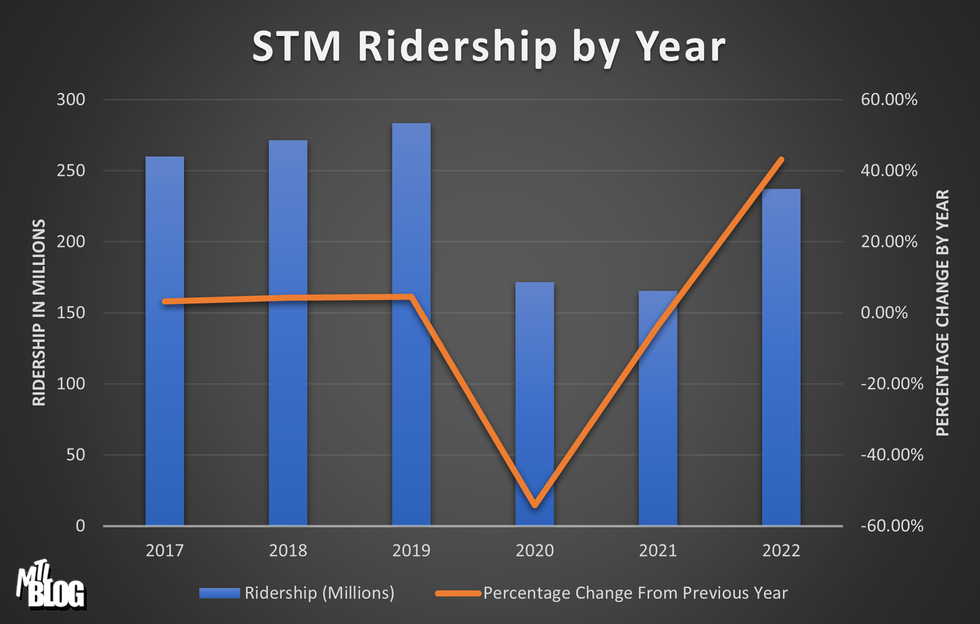 A graph showing the dip in STM ridership between 2017 and 2022.
A graph showing the dip in STM ridership between 2017 and 2022. Someone waits on a metro platform for a train to stop at Assomption station.
Someone waits on a metro platform for a train to stop at Assomption station.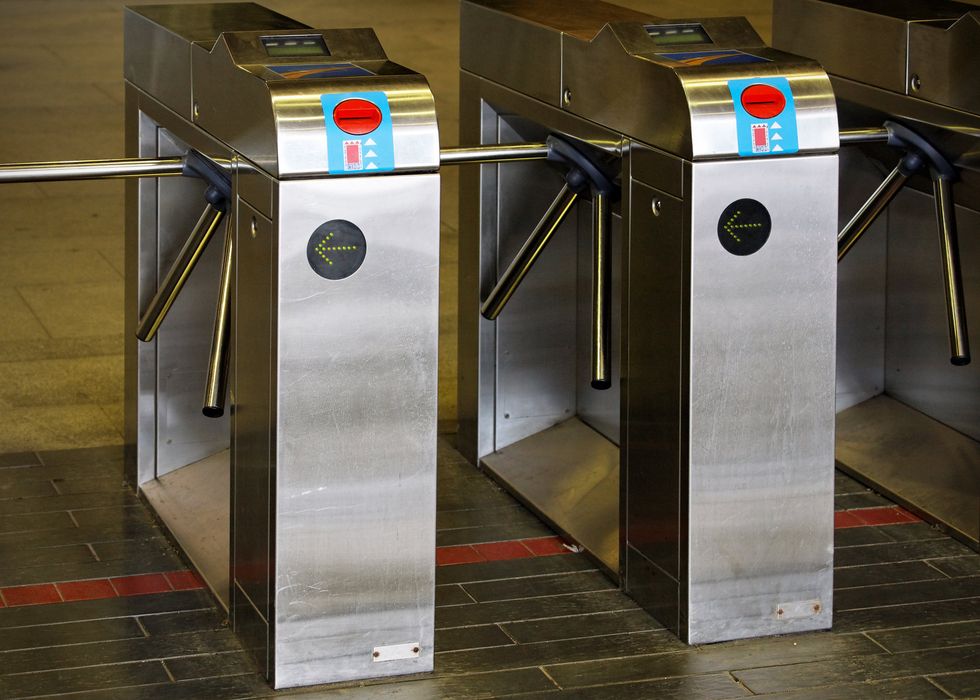 Montreal metro turnstiles.
Montreal metro turnstiles.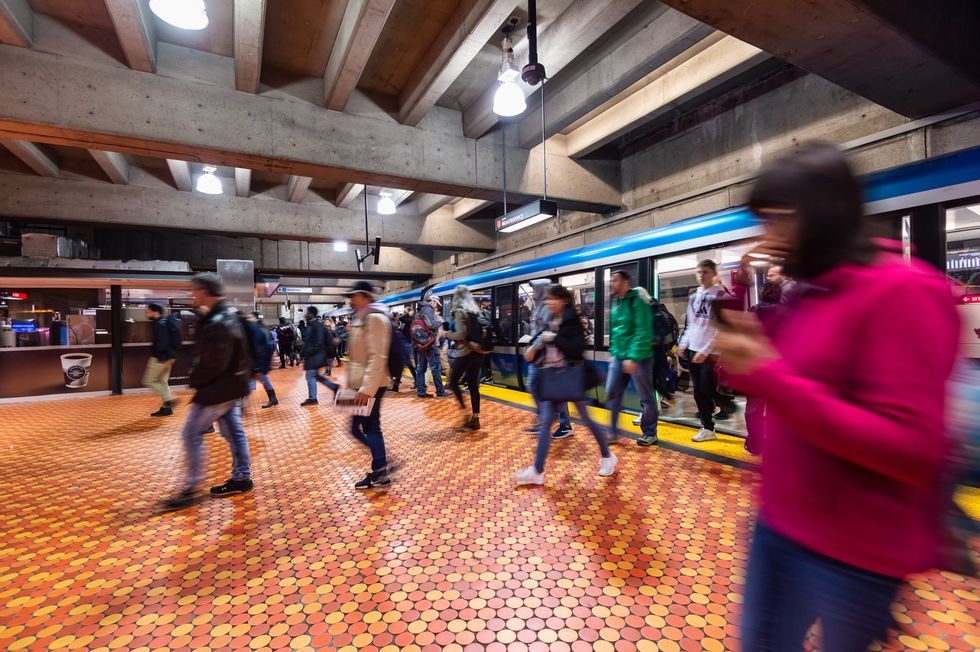 Passengers getting off a subway train at Lionel Groux station.
Passengers getting off a subway train at Lionel Groux station.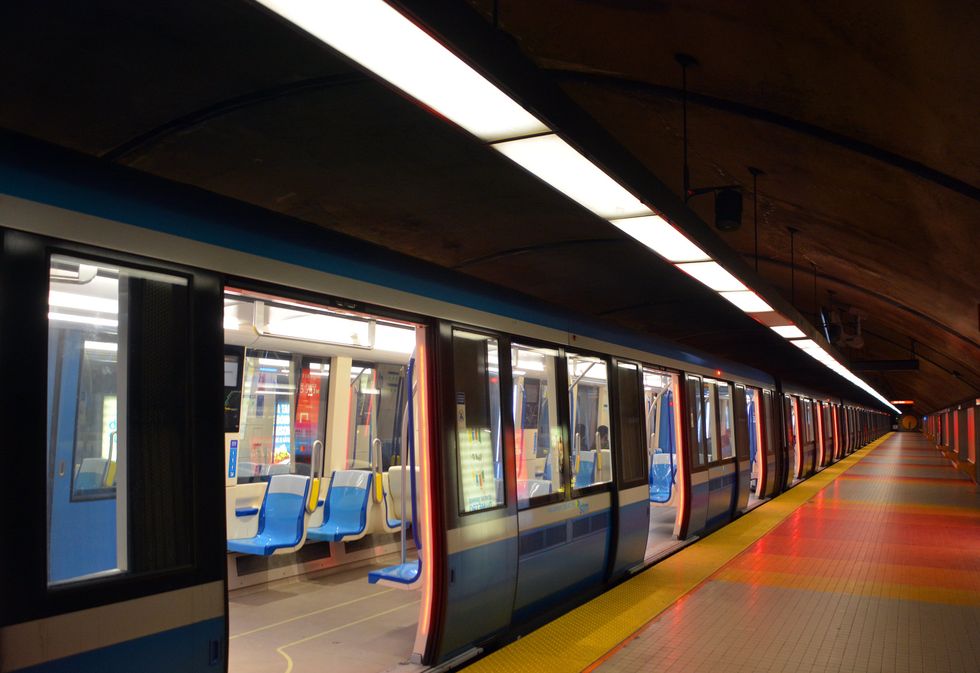 An empty metro train and platform.
An empty metro train and platform.
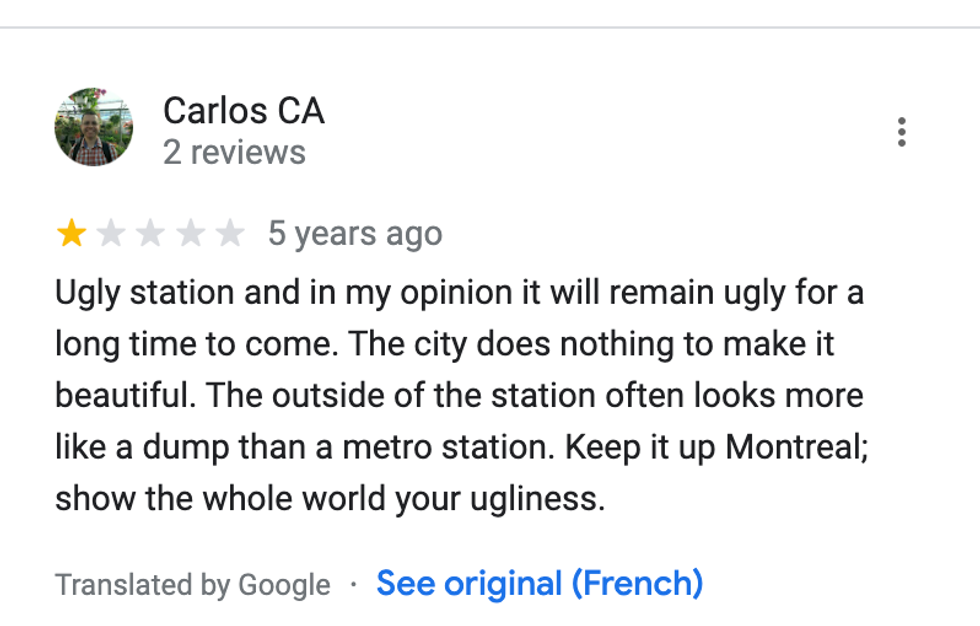



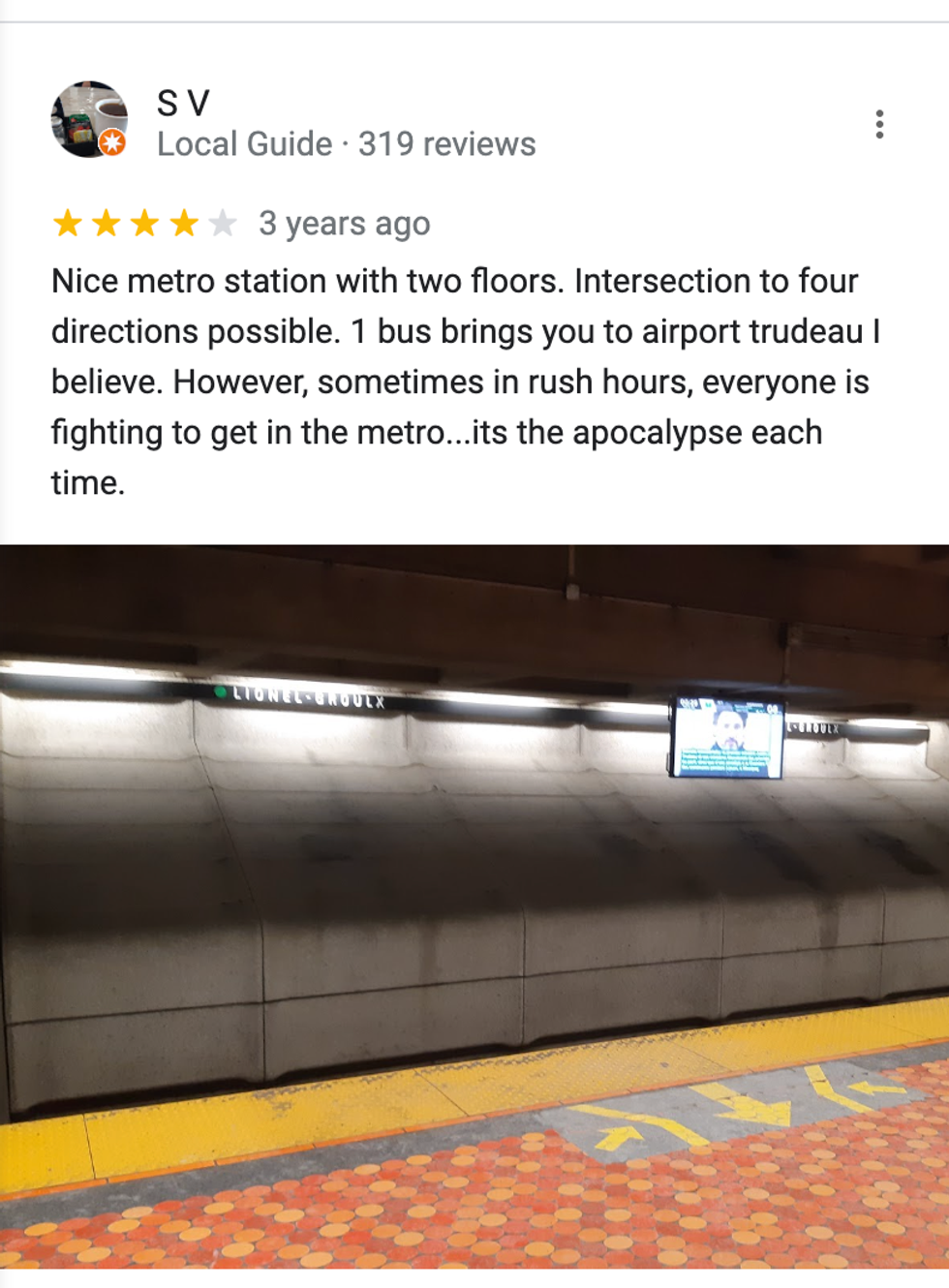

 Spot the robot roaming Bonaventure metro station.
Spot the robot roaming Bonaventure metro station.  Graffiti detected by Spot the robot in Bonaventure metro station.
Graffiti detected by Spot the robot in Bonaventure metro station.  A map of downtown Montreal showing the COP15 security perimeter and the zone surrounding the Palais des congrès where there will be no bus stops.
STM
A map of downtown Montreal showing the COP15 security perimeter and the zone surrounding the Palais des congrès where there will be no bus stops.
STM
